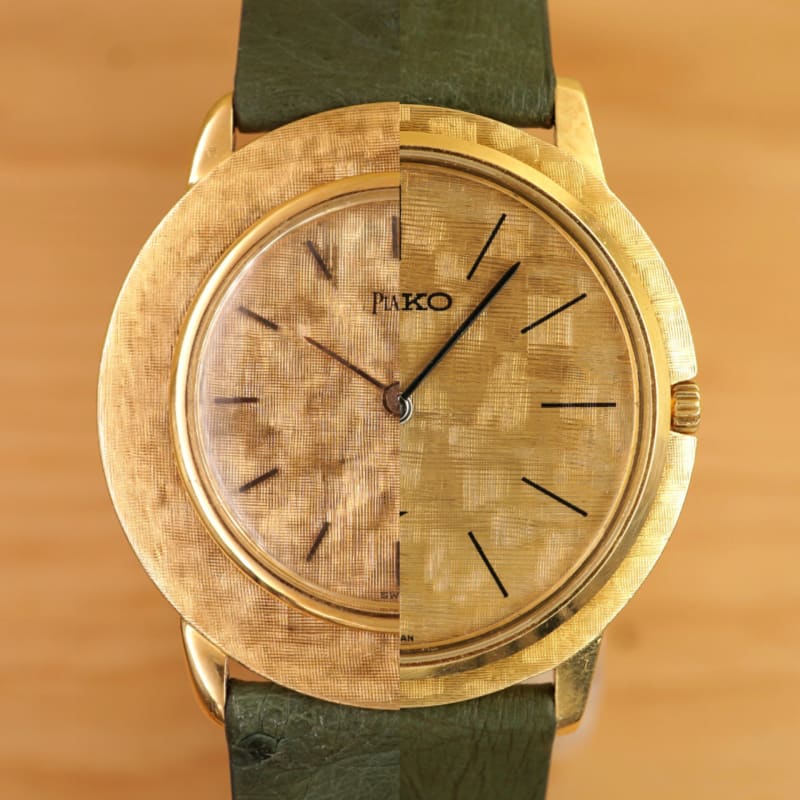Ten years later (1969) and beaten by 0.01mm -- Piaget cal9P vs Seiko cal68. This is industry-history how we like it: significant and comprehensible.
Sure, while the Rolex-Fanboys are boiling-up the debate about the green inverted Ragazzi-Six again, we are pacing through the ages with an eye for the relevant #horologicalMilestones (*klikk): Avanti, Plus Ultra.
Ad 2025-01-19: In more detail: The Shantung (left) was presented by Piaget in 1959 (or even earlier, but the first example we know is dated to 1959) a lavish and extensively finished 18K-watch encasing their innovative ultra-thin manual cal9P. This horological milestone (1957) is used until today because it is a easily maintainable and robust & precise manual movement that measures just 1.99mm in thickness. And as we used to say: there is no other complication as relevant as miniaturization (*klikk here) and so there was a race to ultra-thin. Not in the late 50s or early 60s but in the second half of the 1960s the competition from Far East (Japan) silently joined that race: Seiko presented the cal68 (-> cal6810) in 1969 -- a manual movement measuring just 1.98mm. So, a tick less than the very popular Piaget cal9P. And they presented their milestone in a case that appears very similar to the Piaget Shantung -- without doubt not a coincidence. Instead we see here the Japanese way of saying:
"We honor your achievement by using your product as a model. And we can say that we are now able to do the same... at least. Without saying so."
What we can see here in front of us, is thus the product / point in time, when Japanese watchmaking- and goldsmith-craft arrived on the same level of the Swiss industry -- although ten years later (1959 vs 1969). The Seiko is a very interesting artefact of industry-history and so a very important watch.
Notabene: A race to ultrathin was repeated with quartz-movements in the mid to late 1970s, again. Resulting in the ETA Delirium in 1979 (IWC, Longines, Concord, Eterna).
